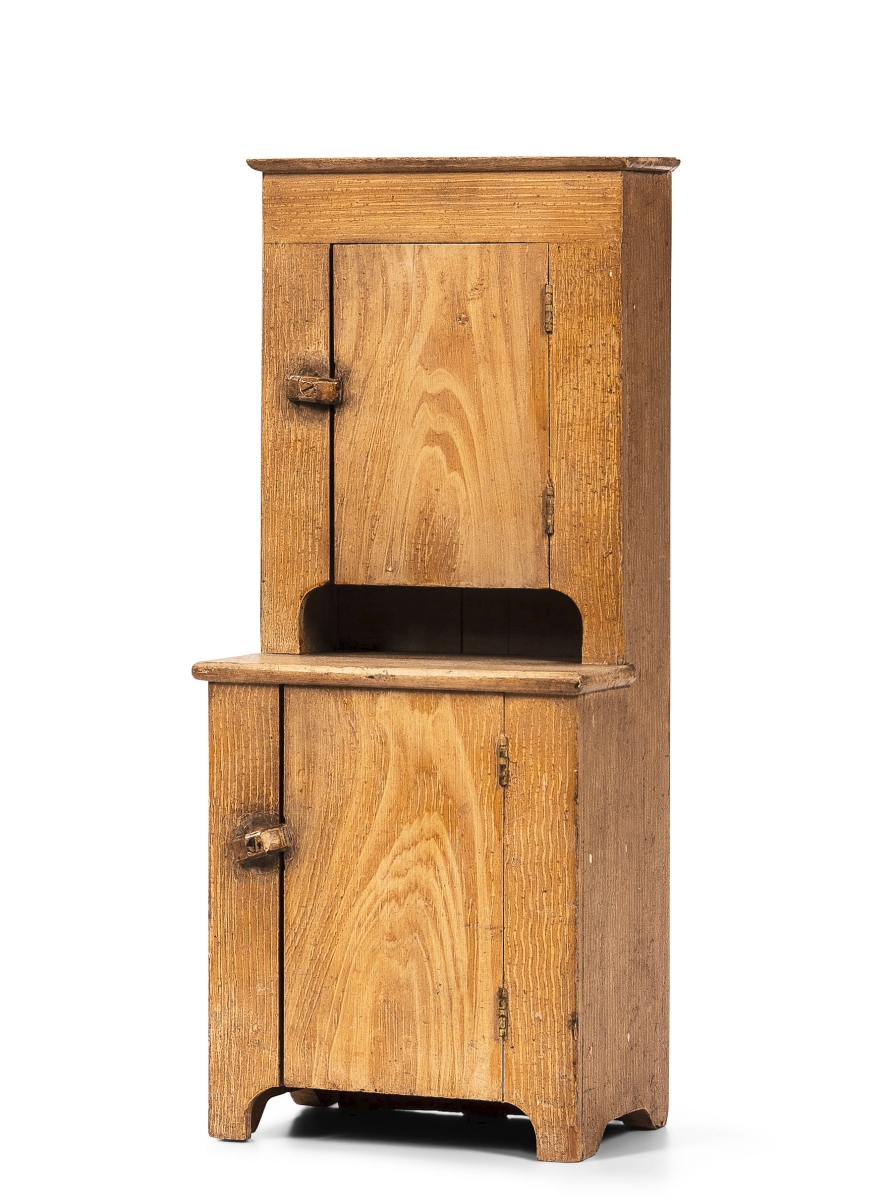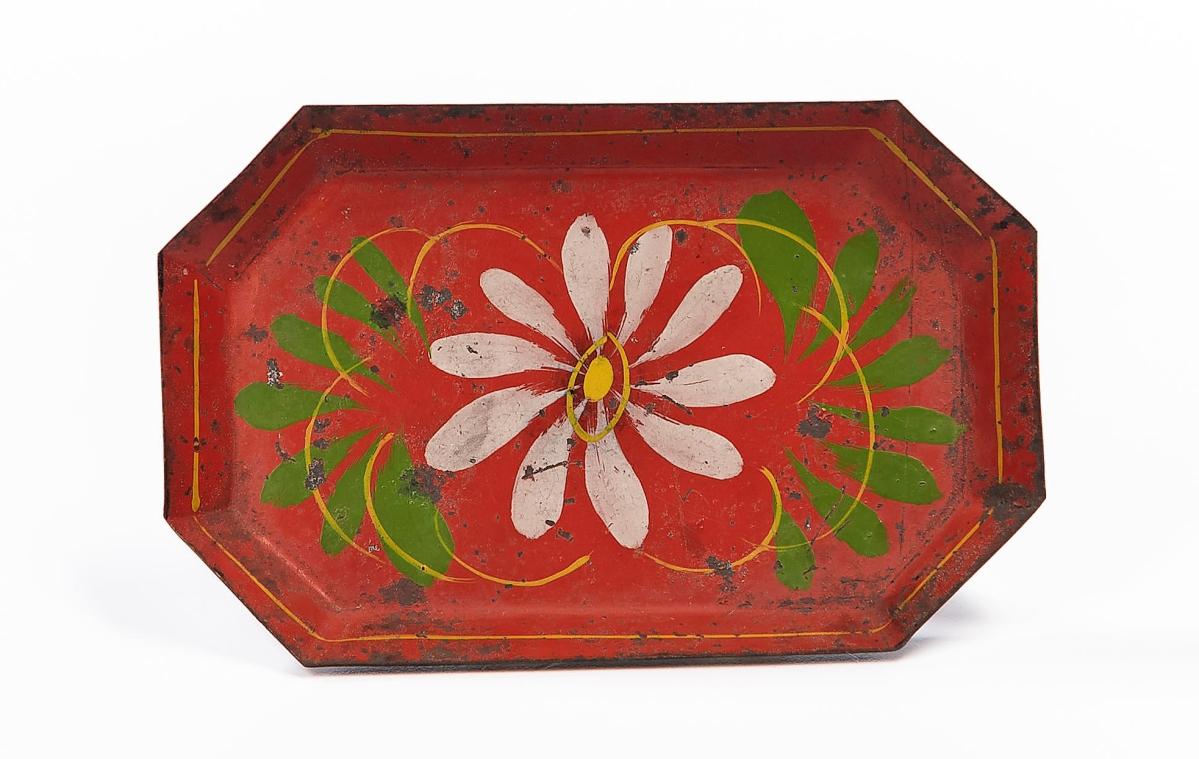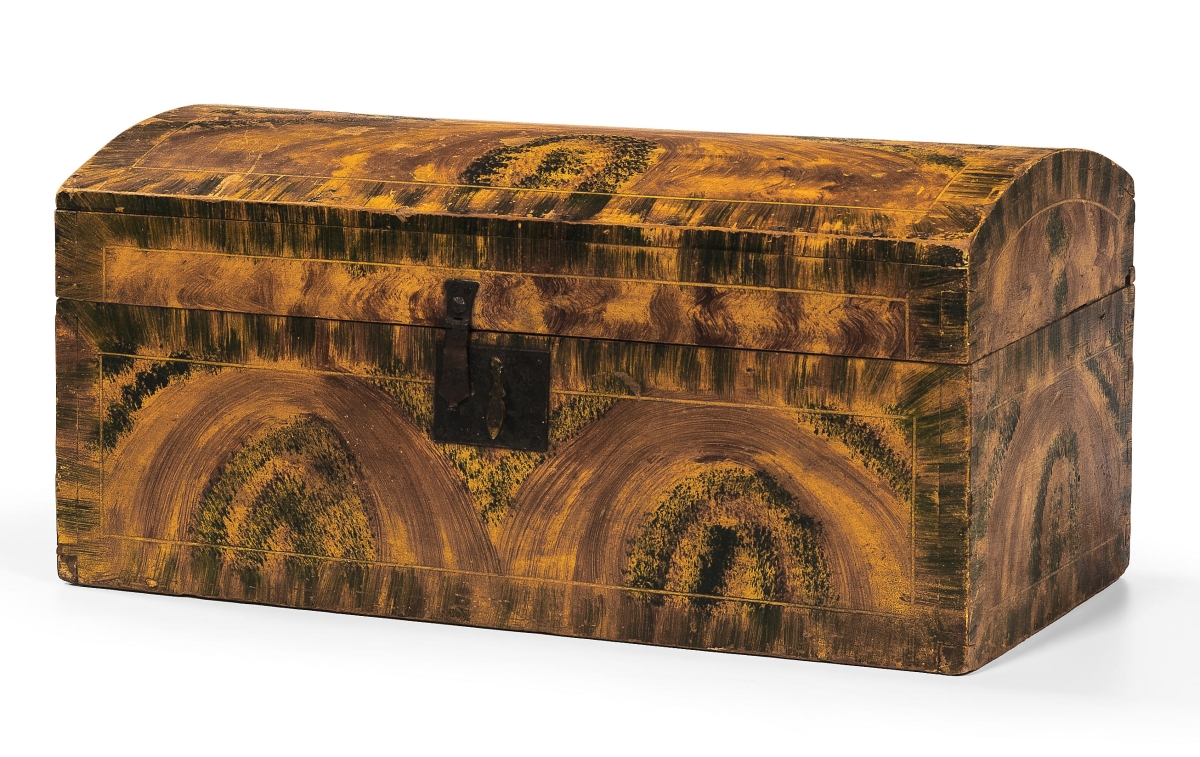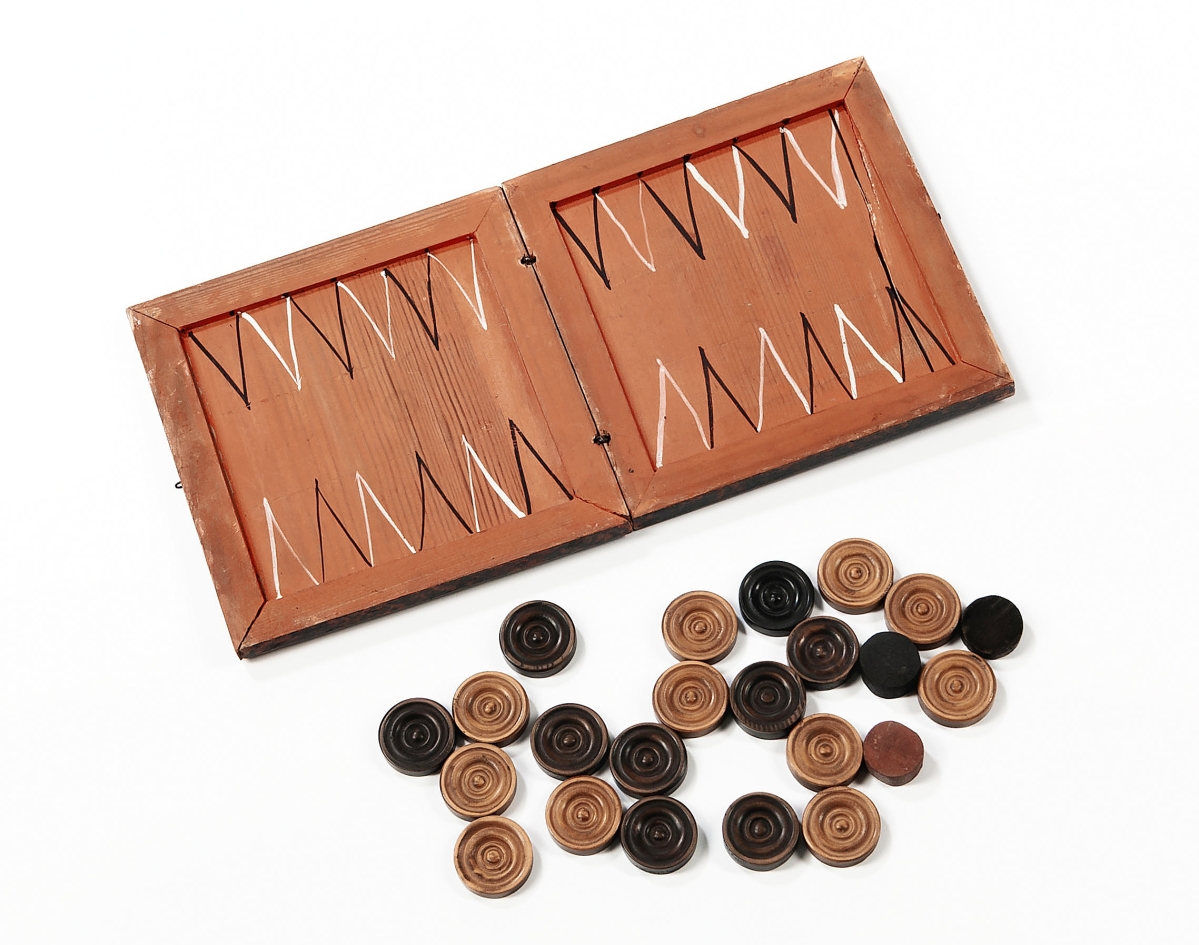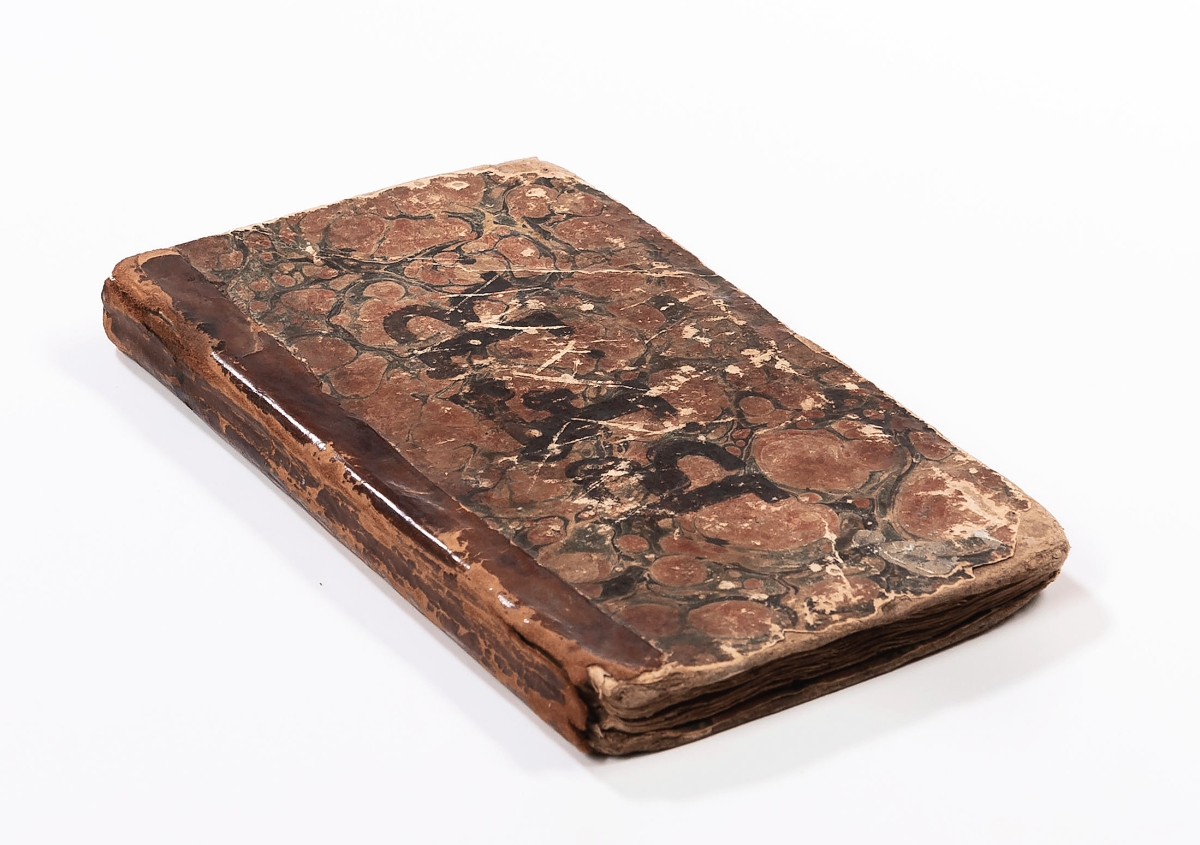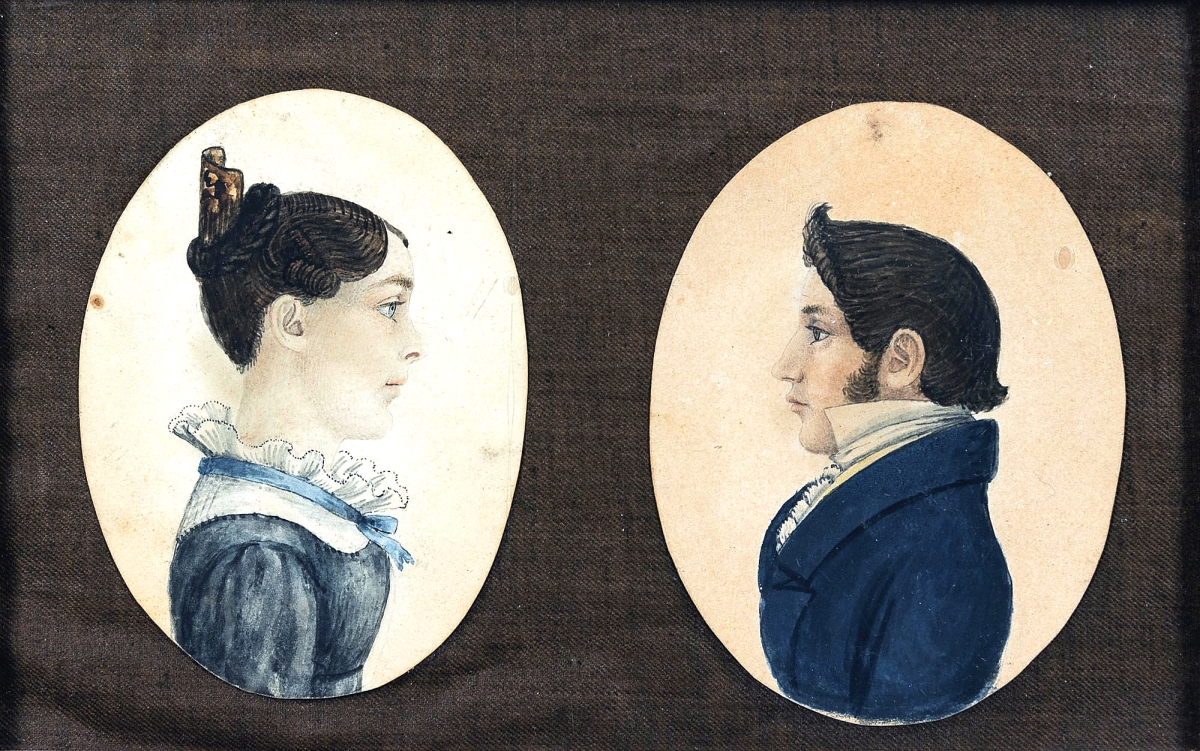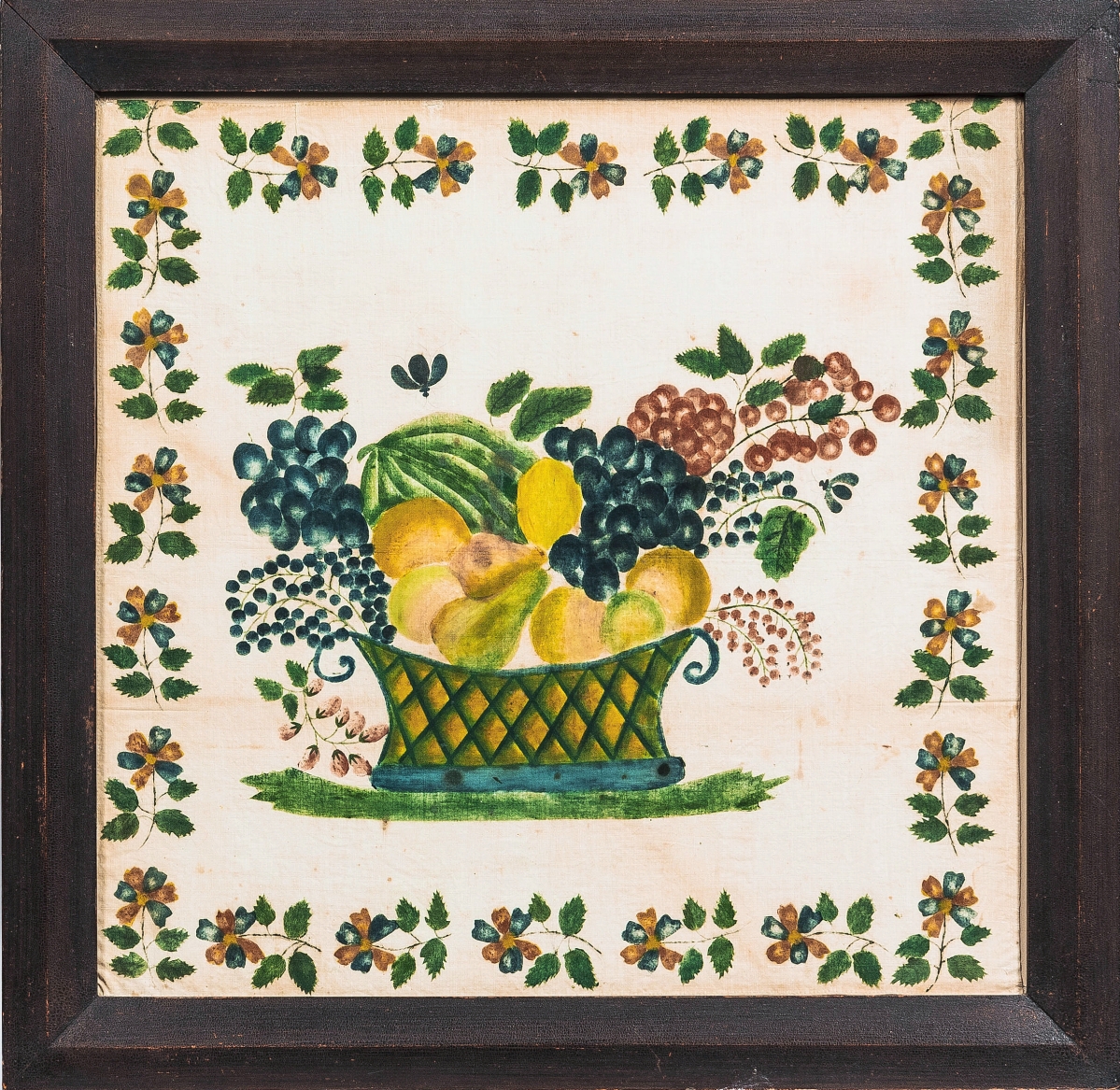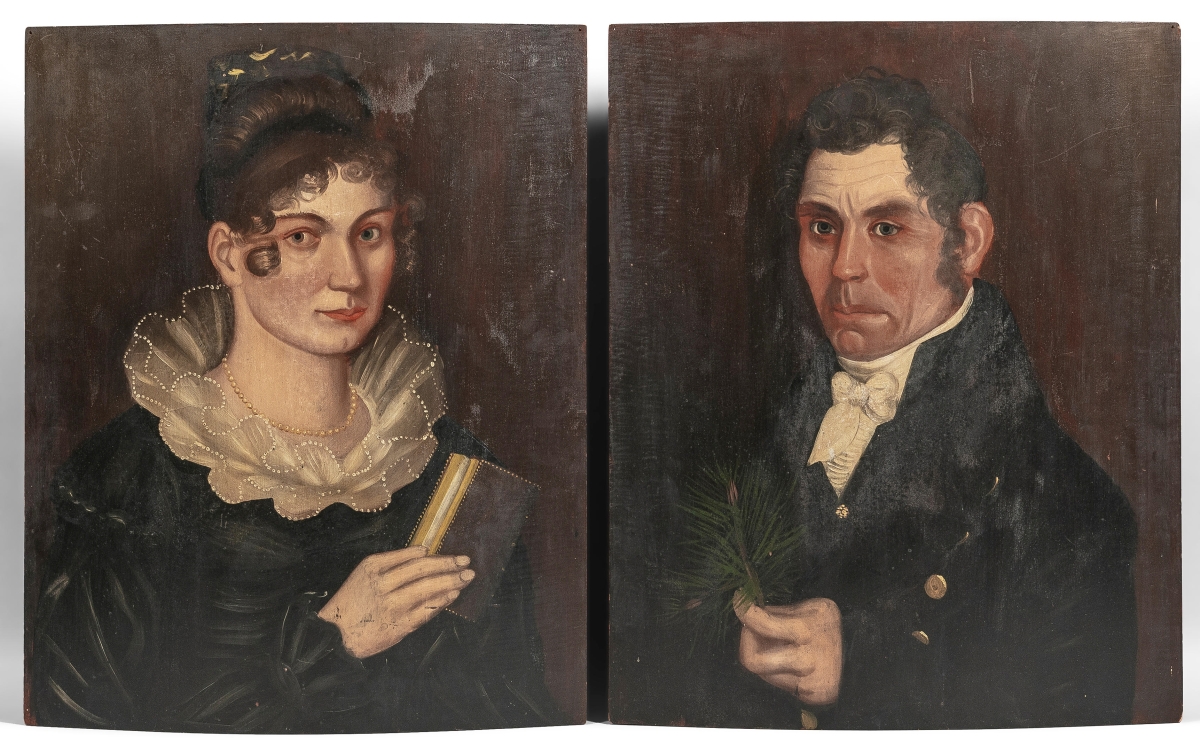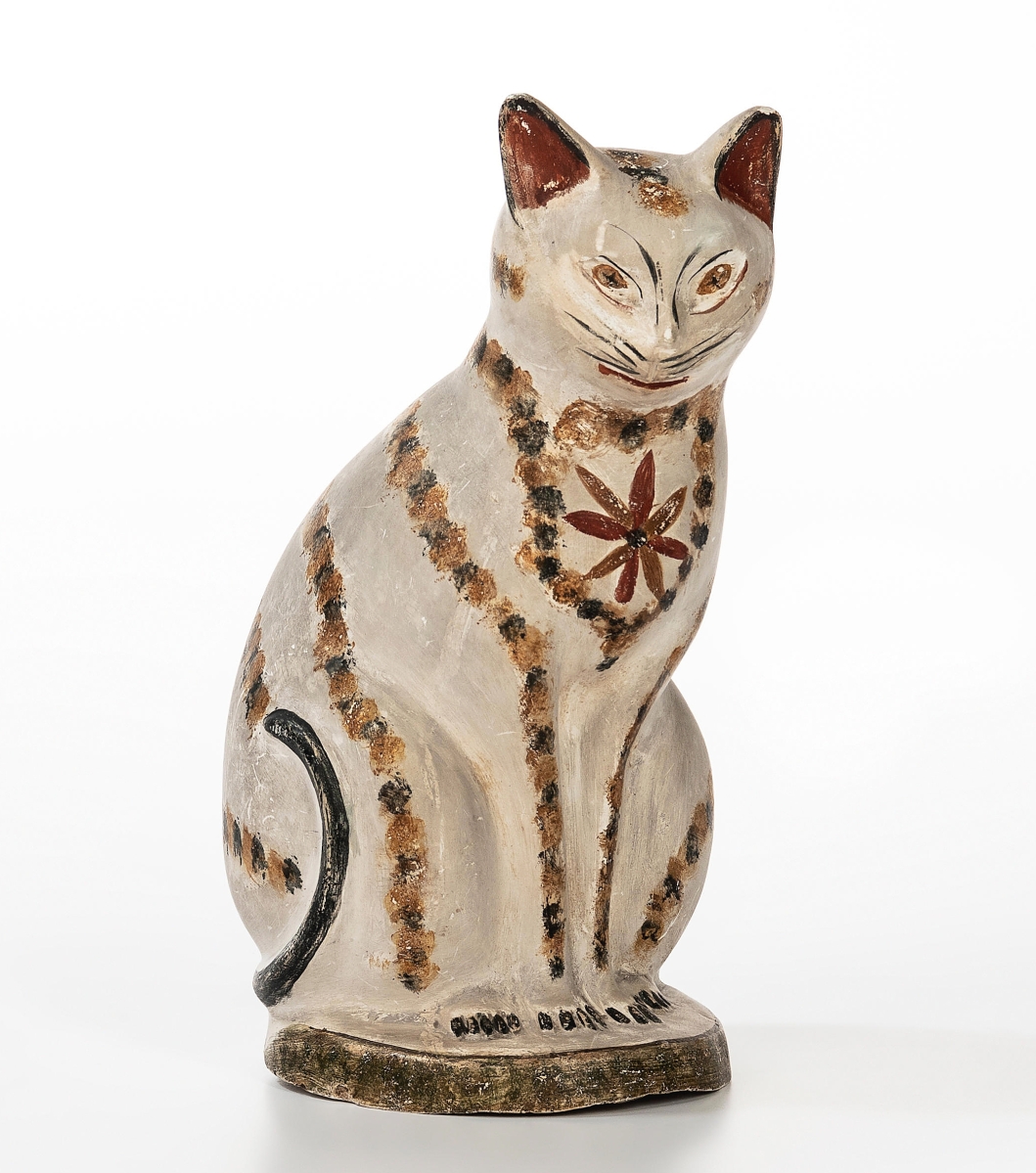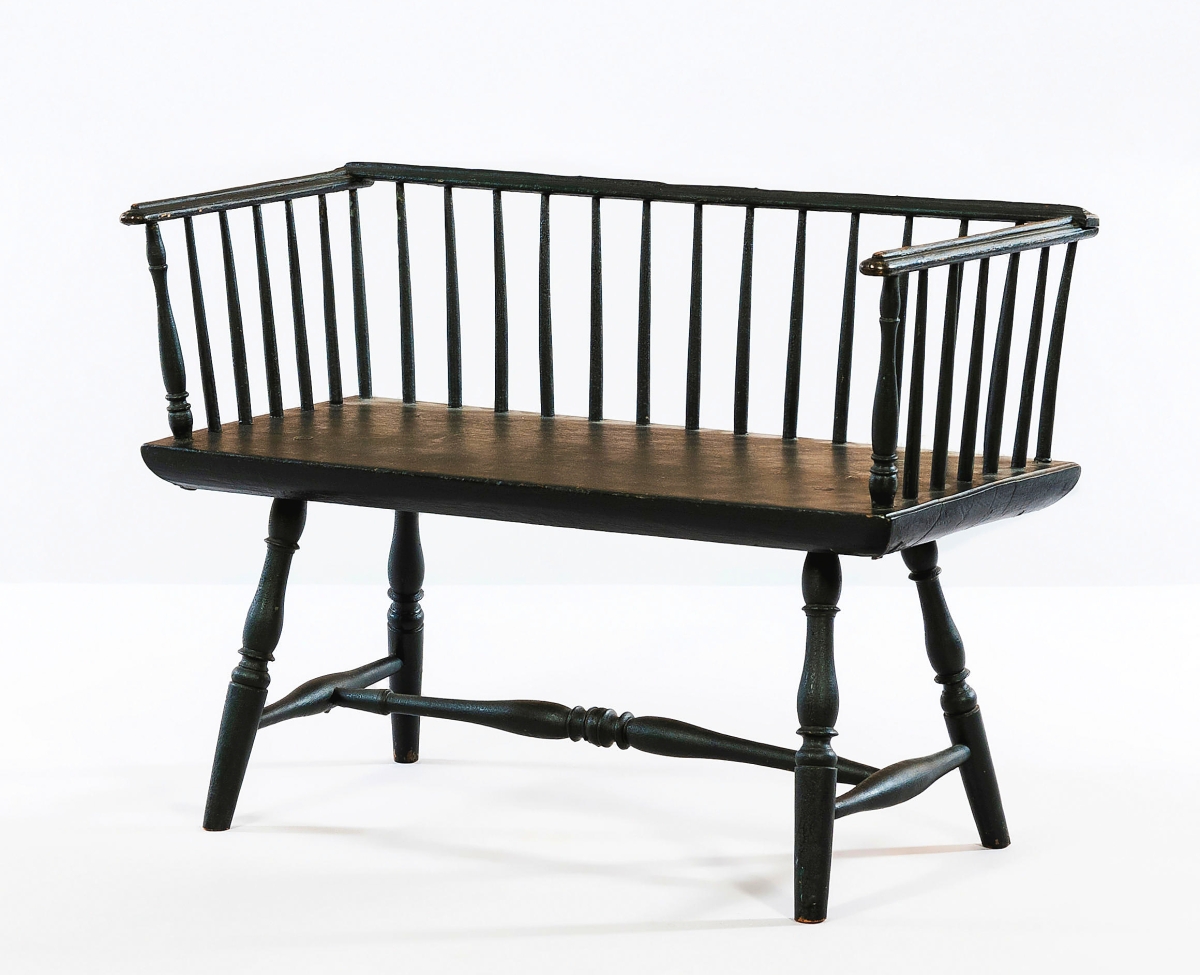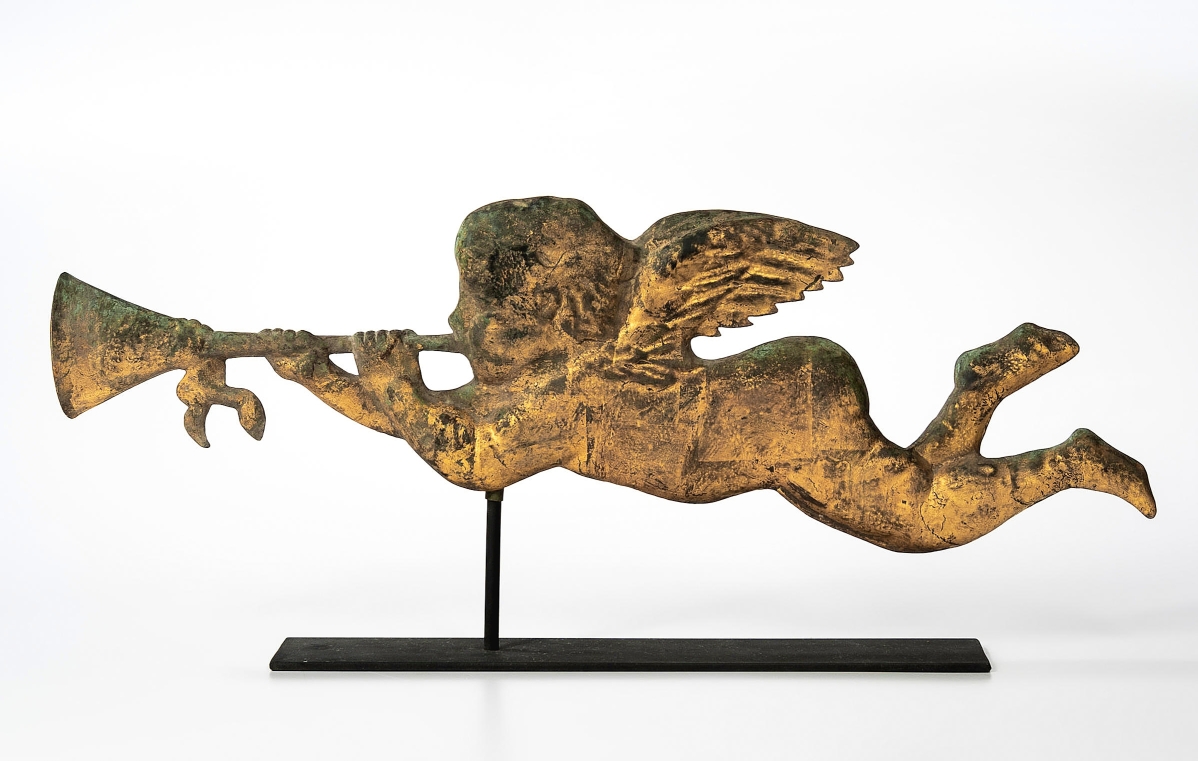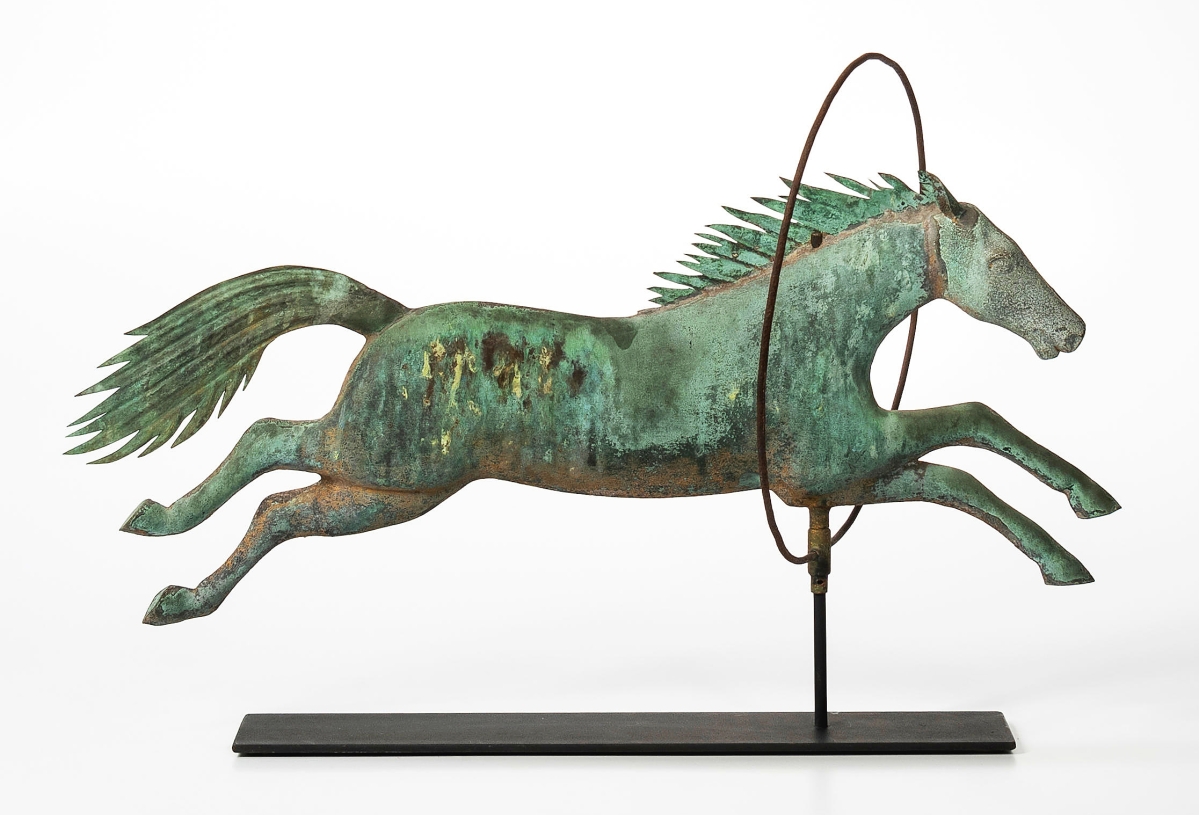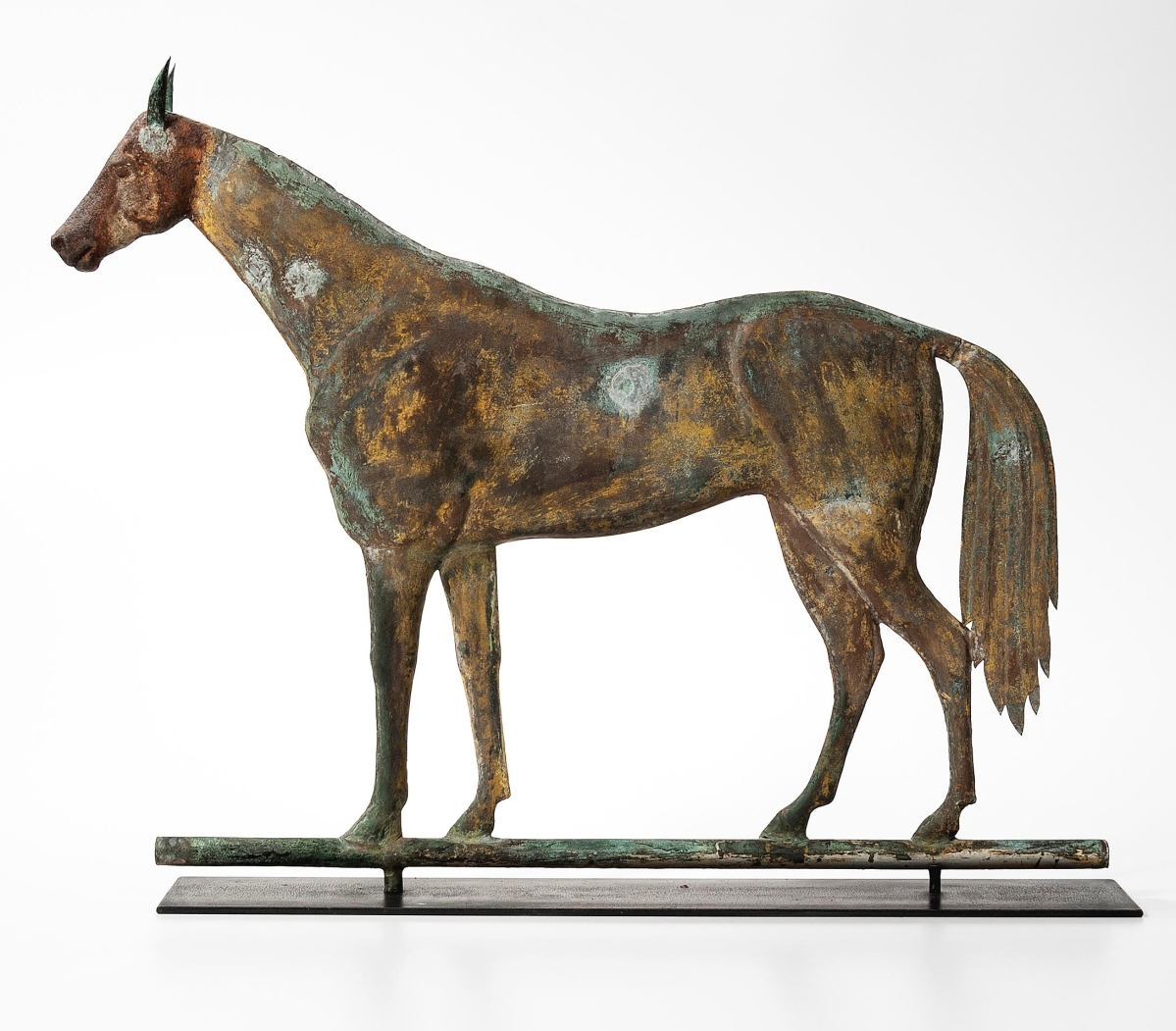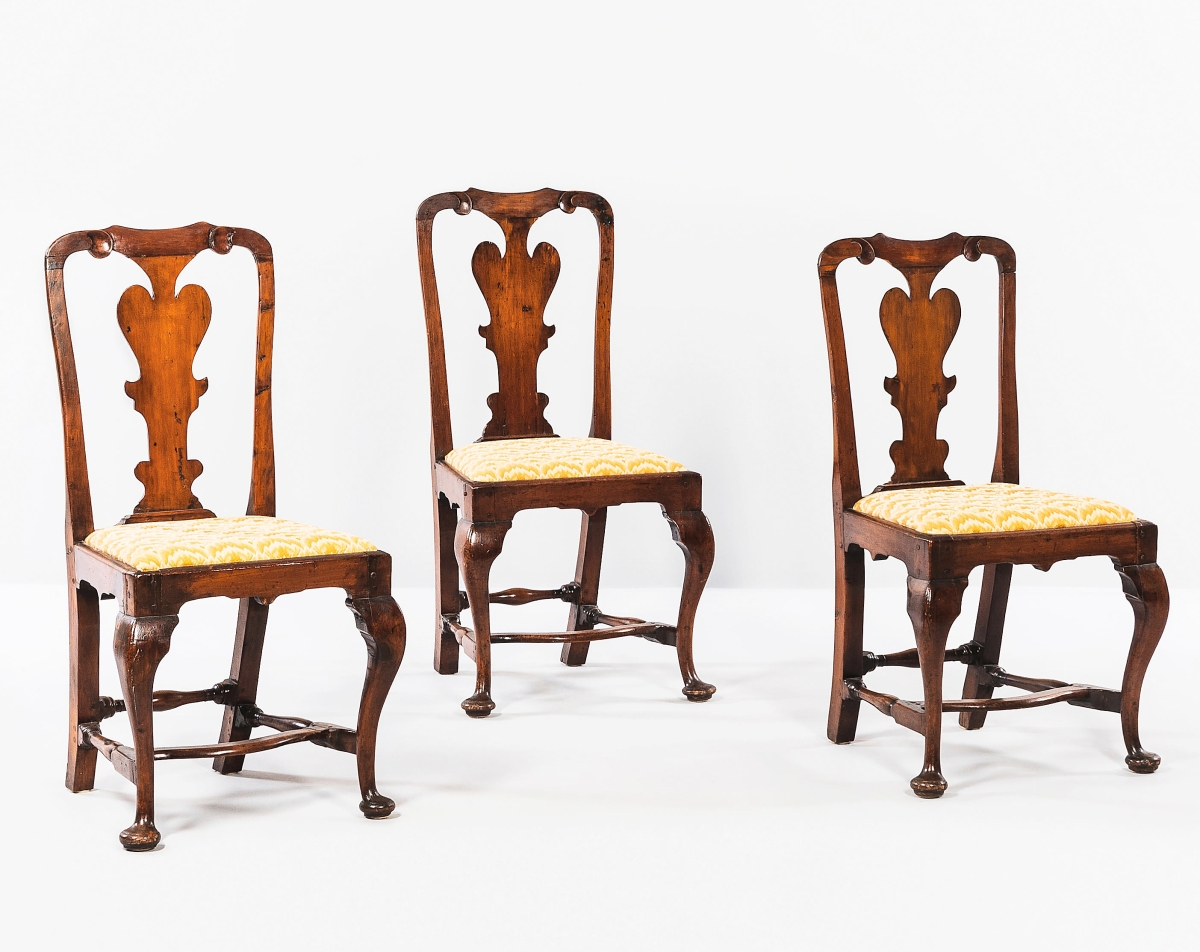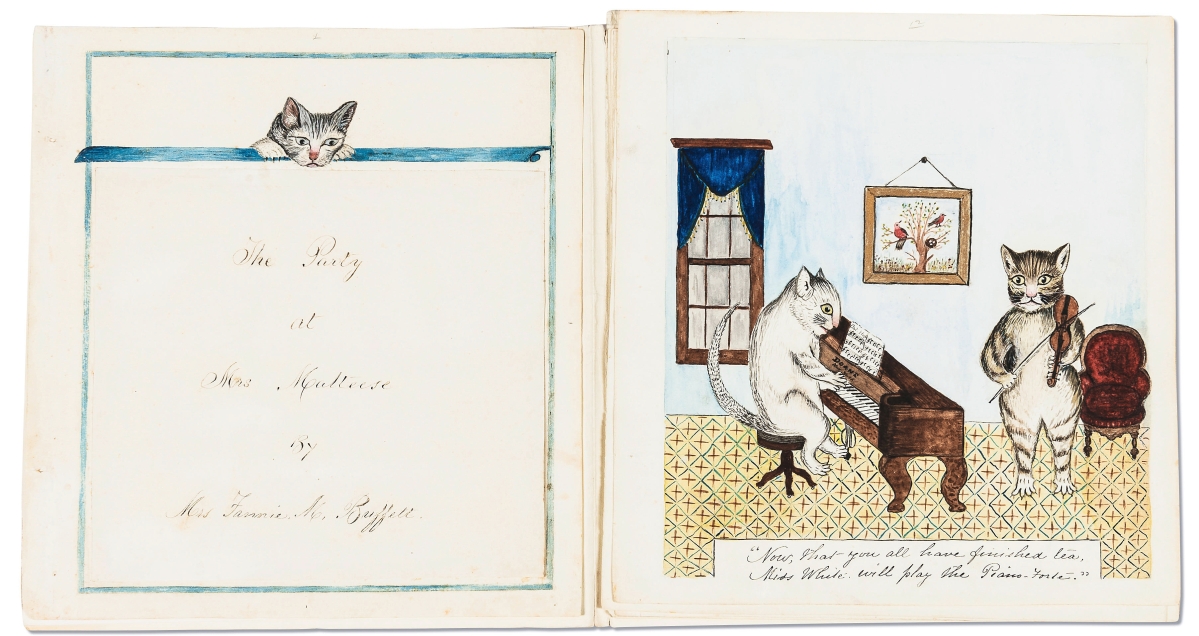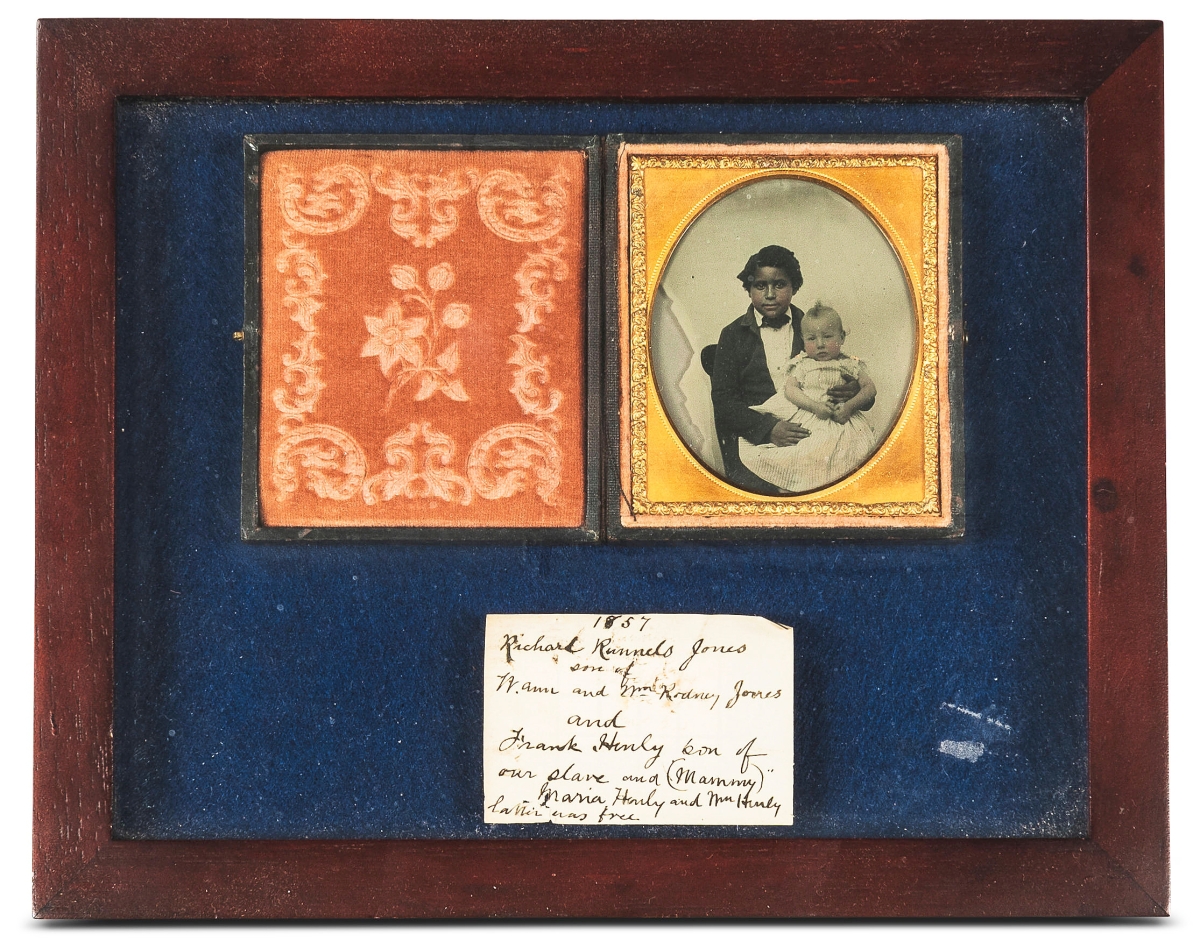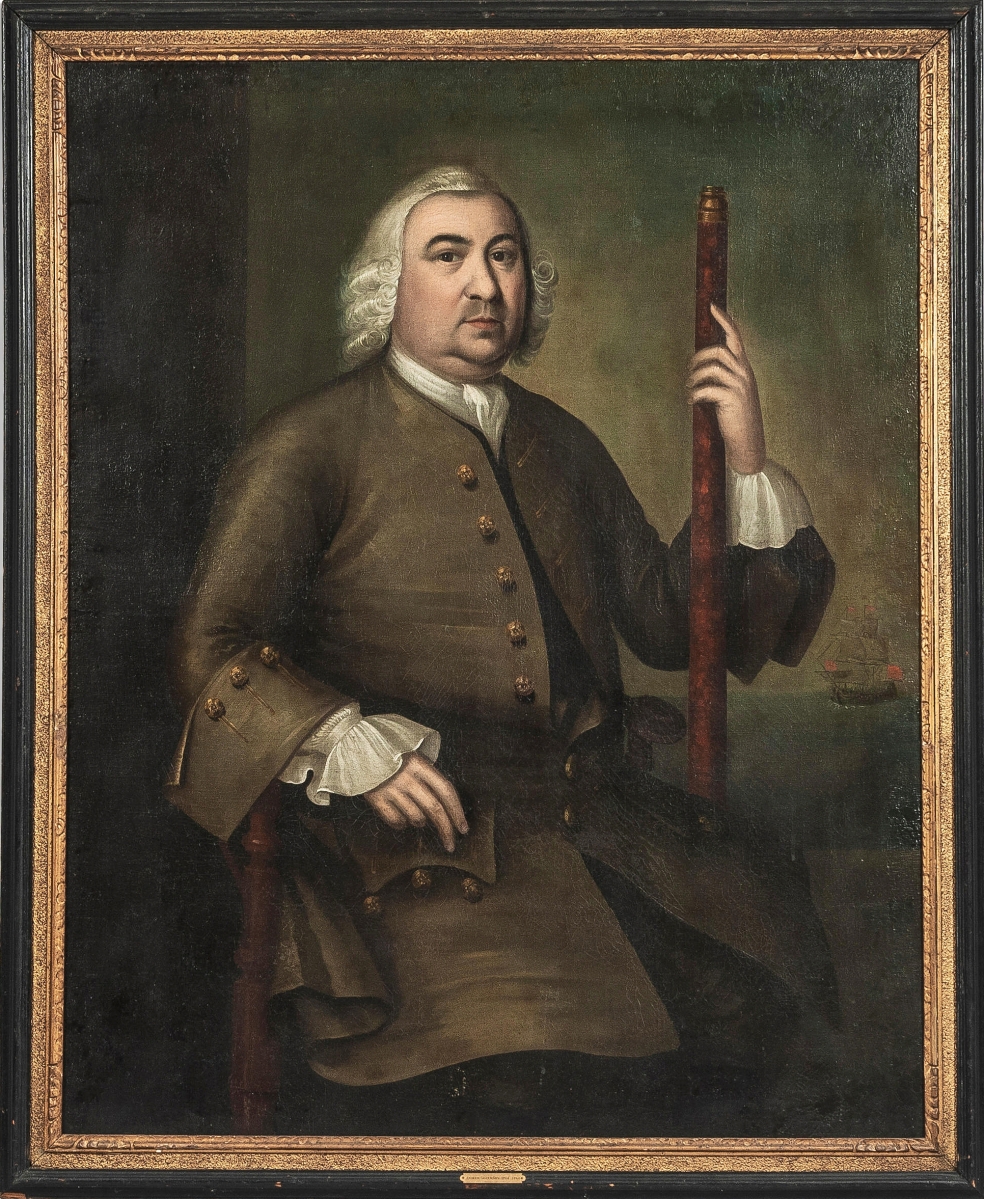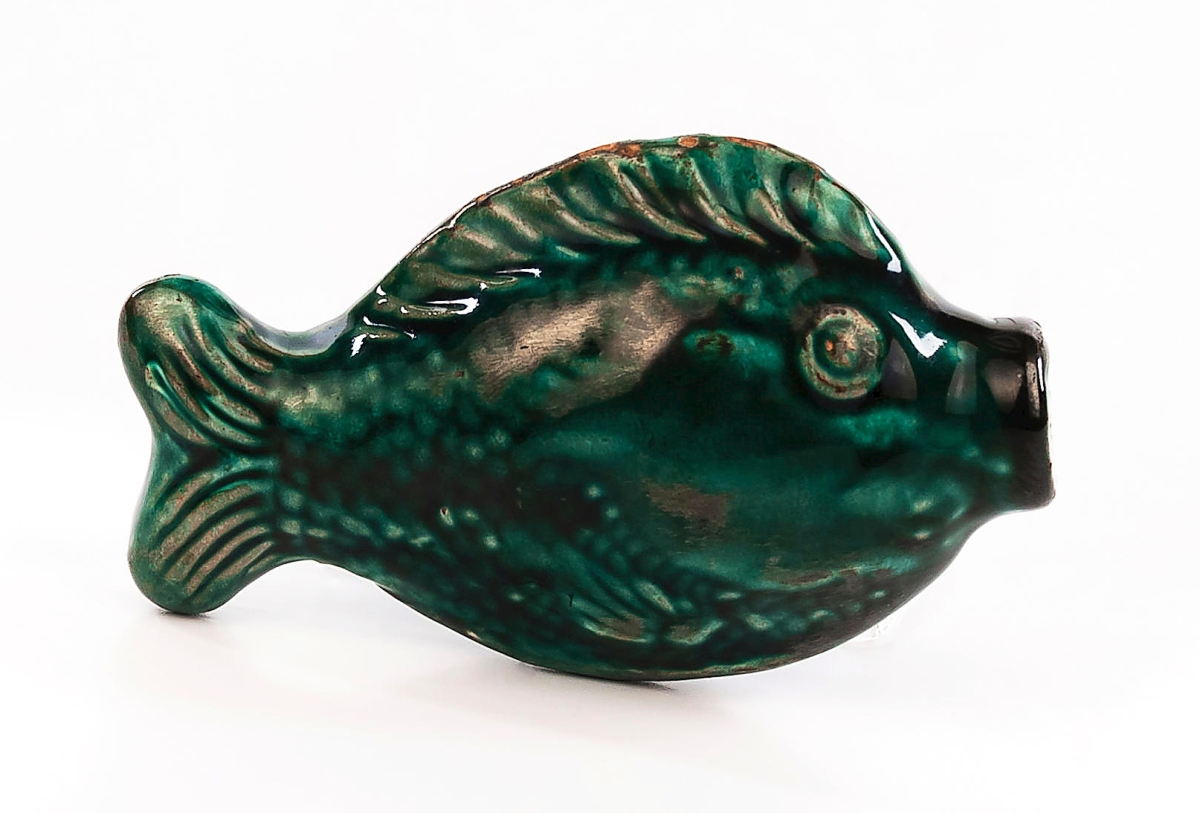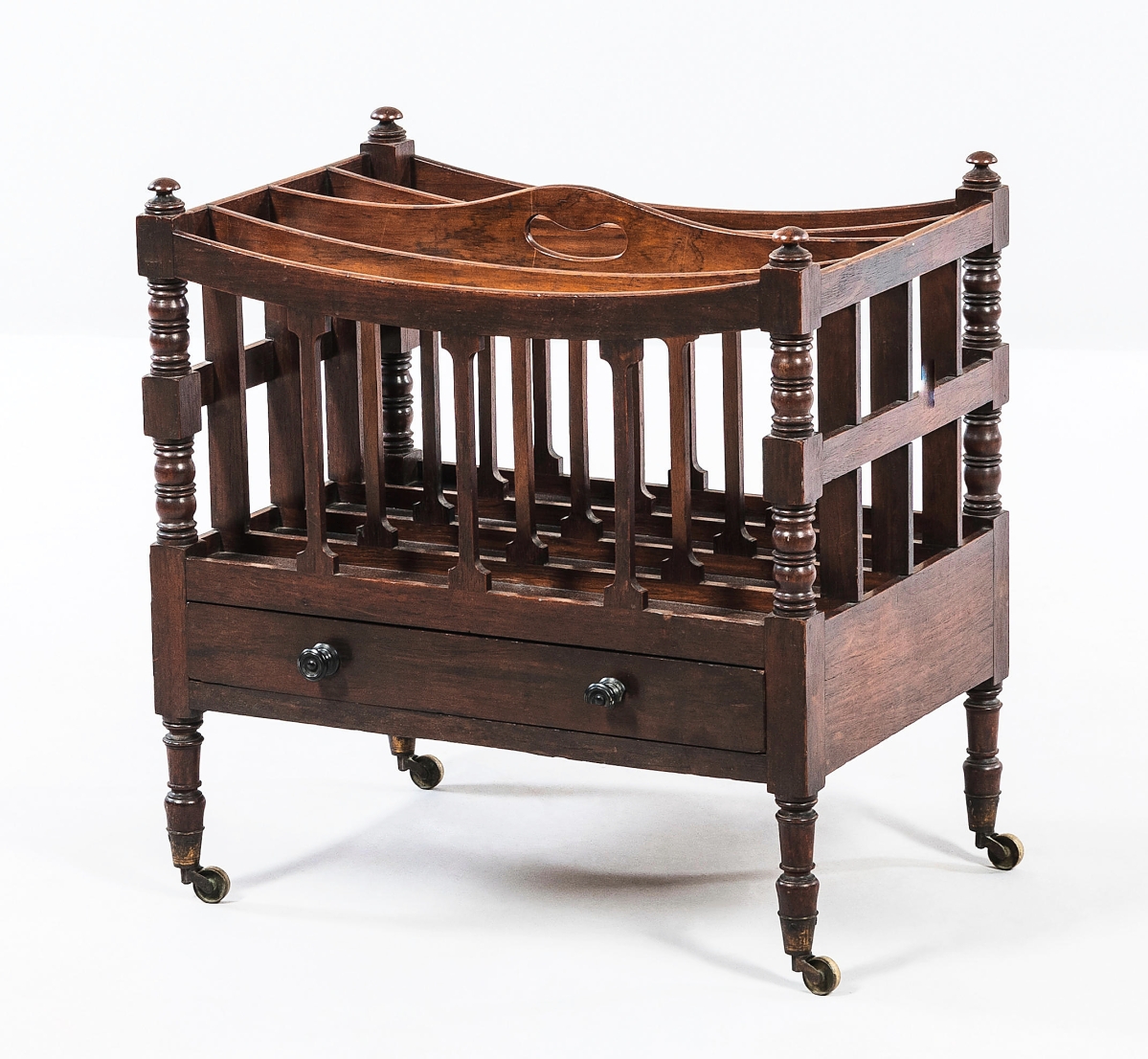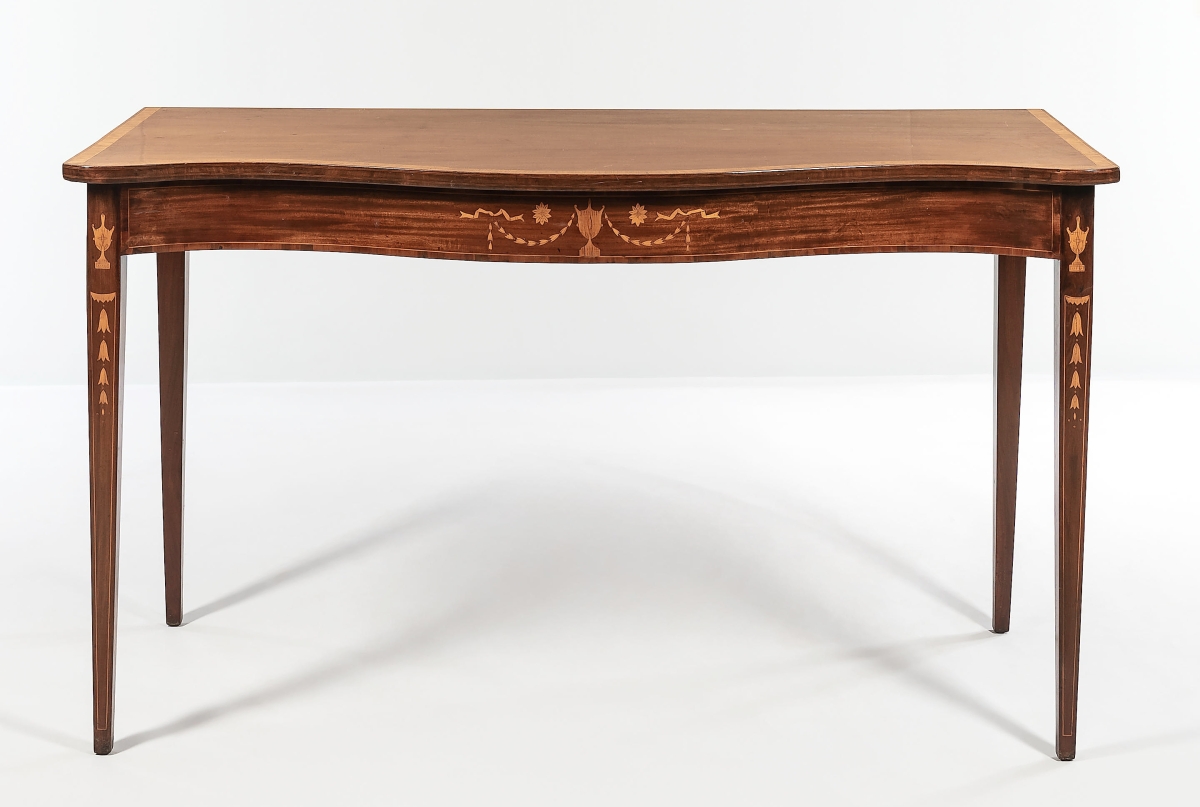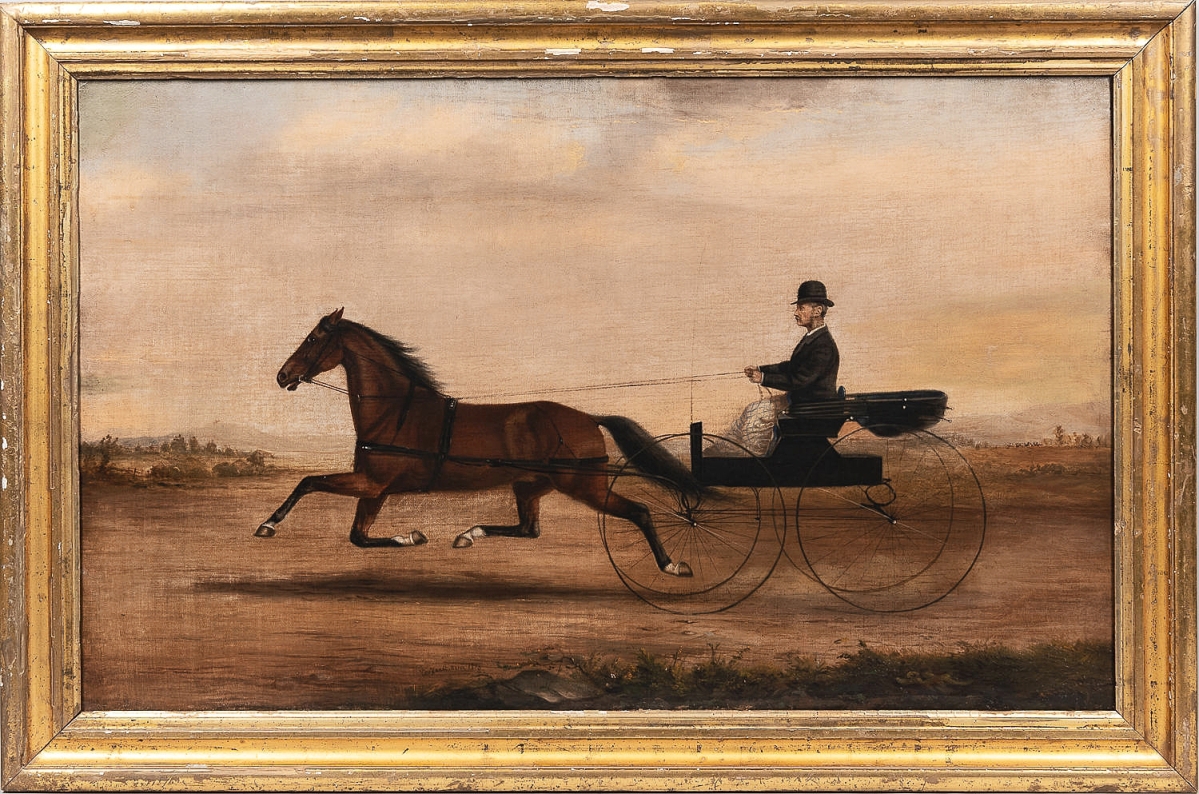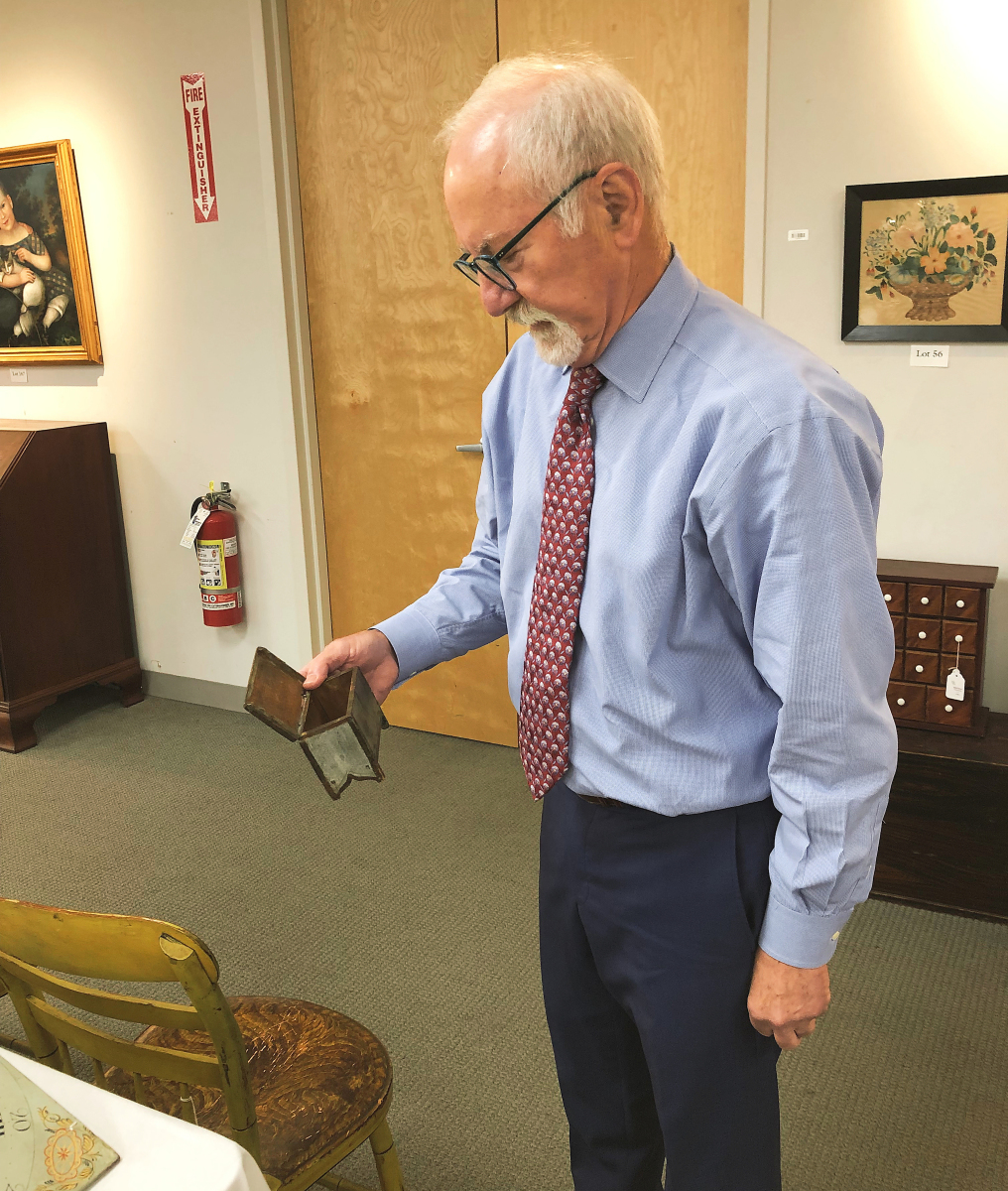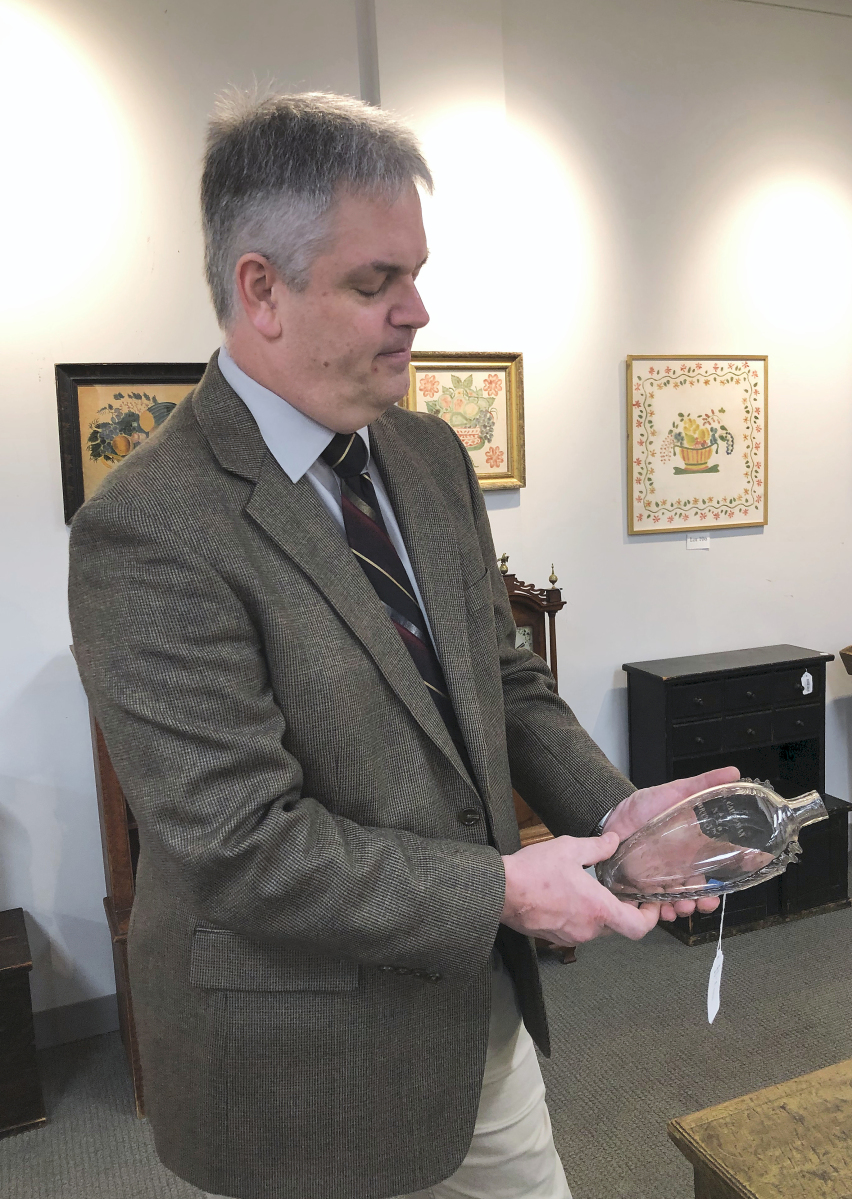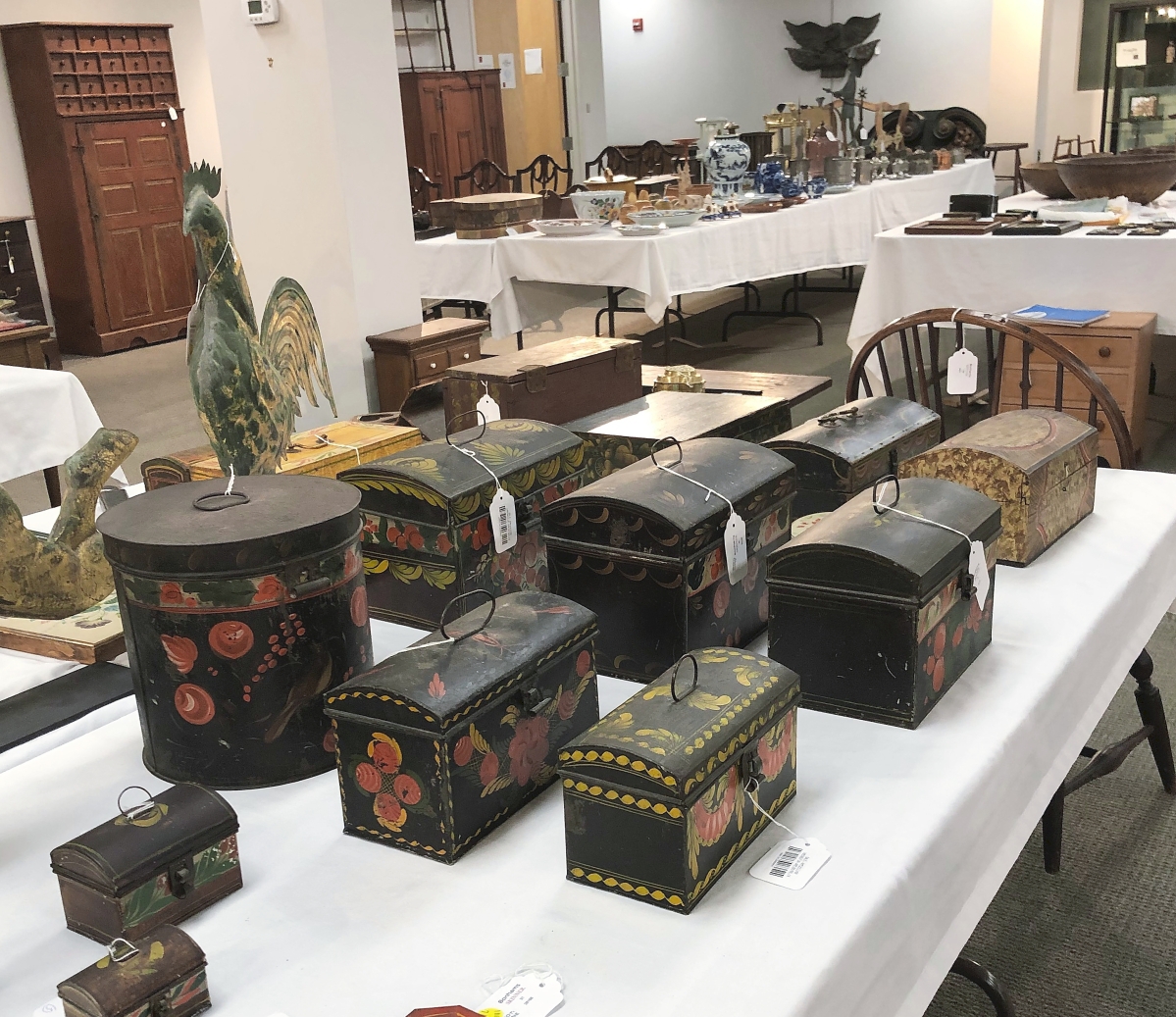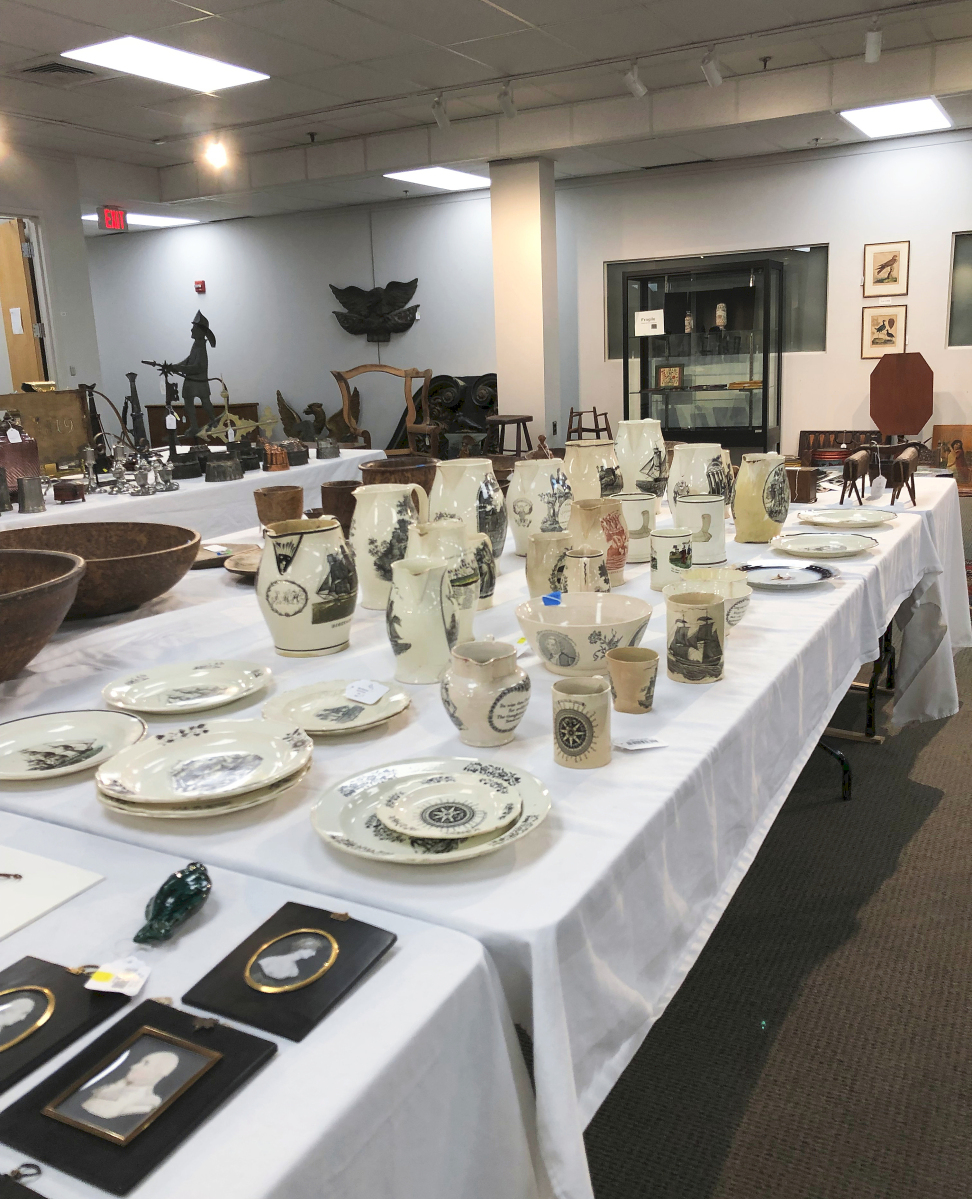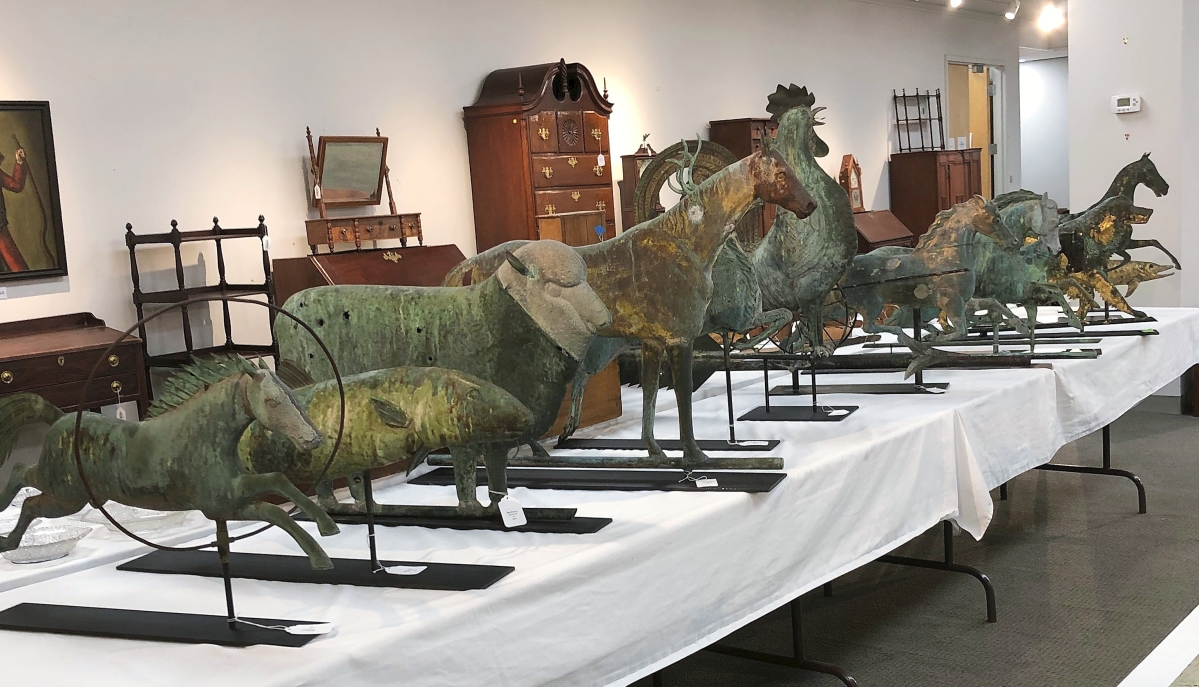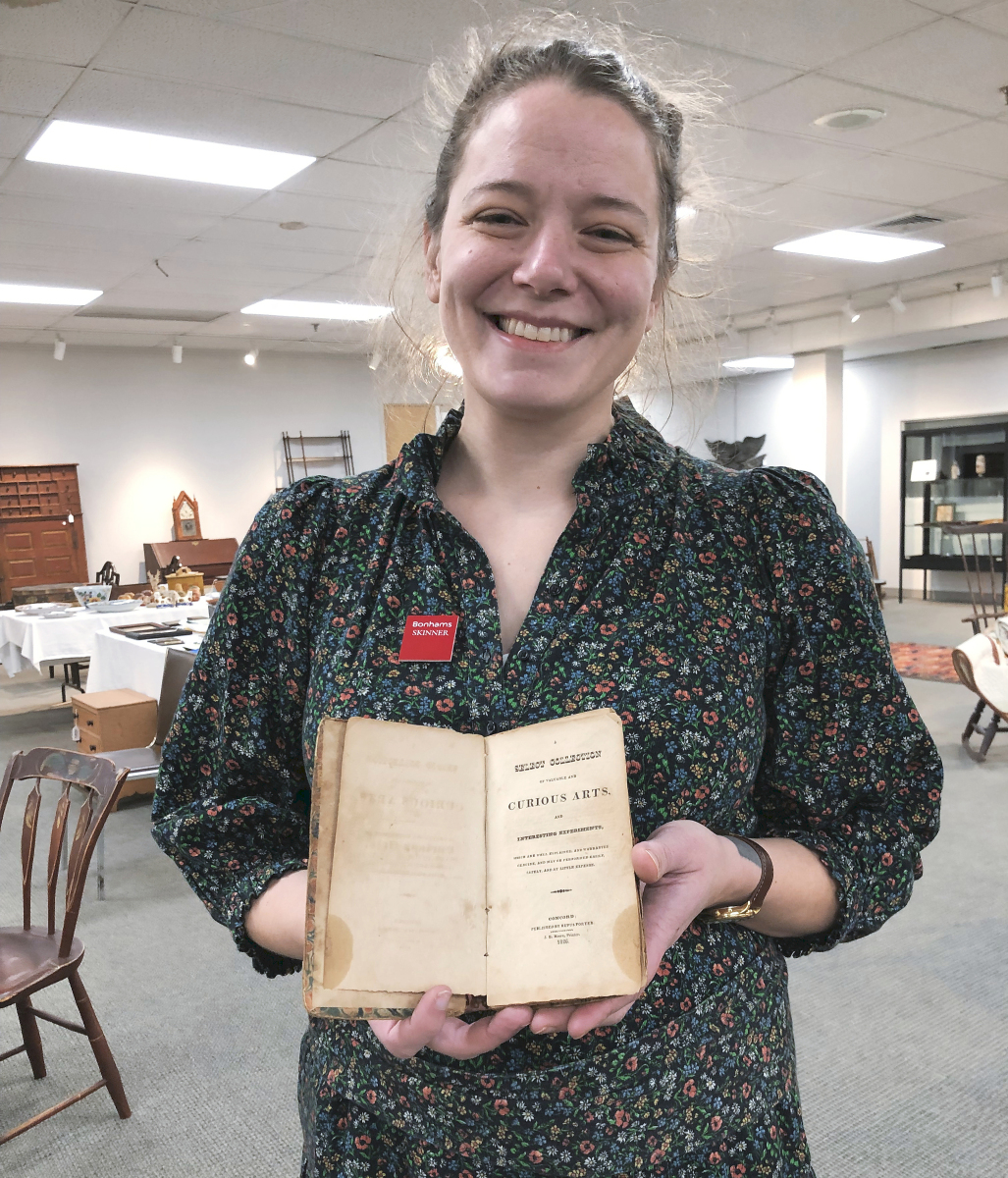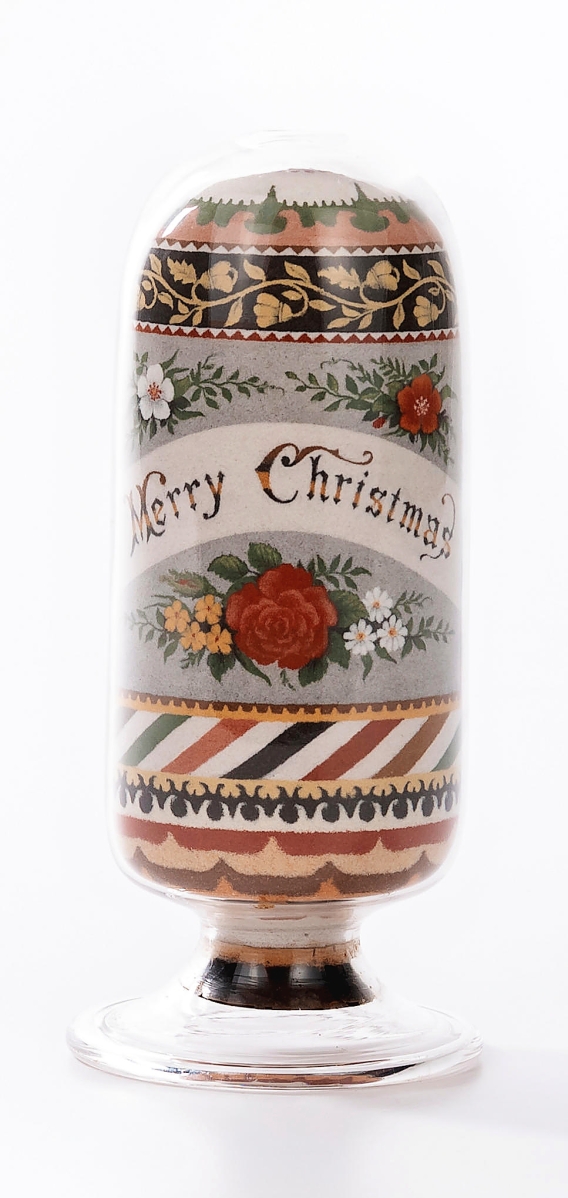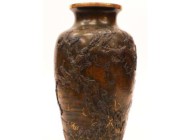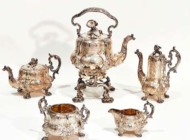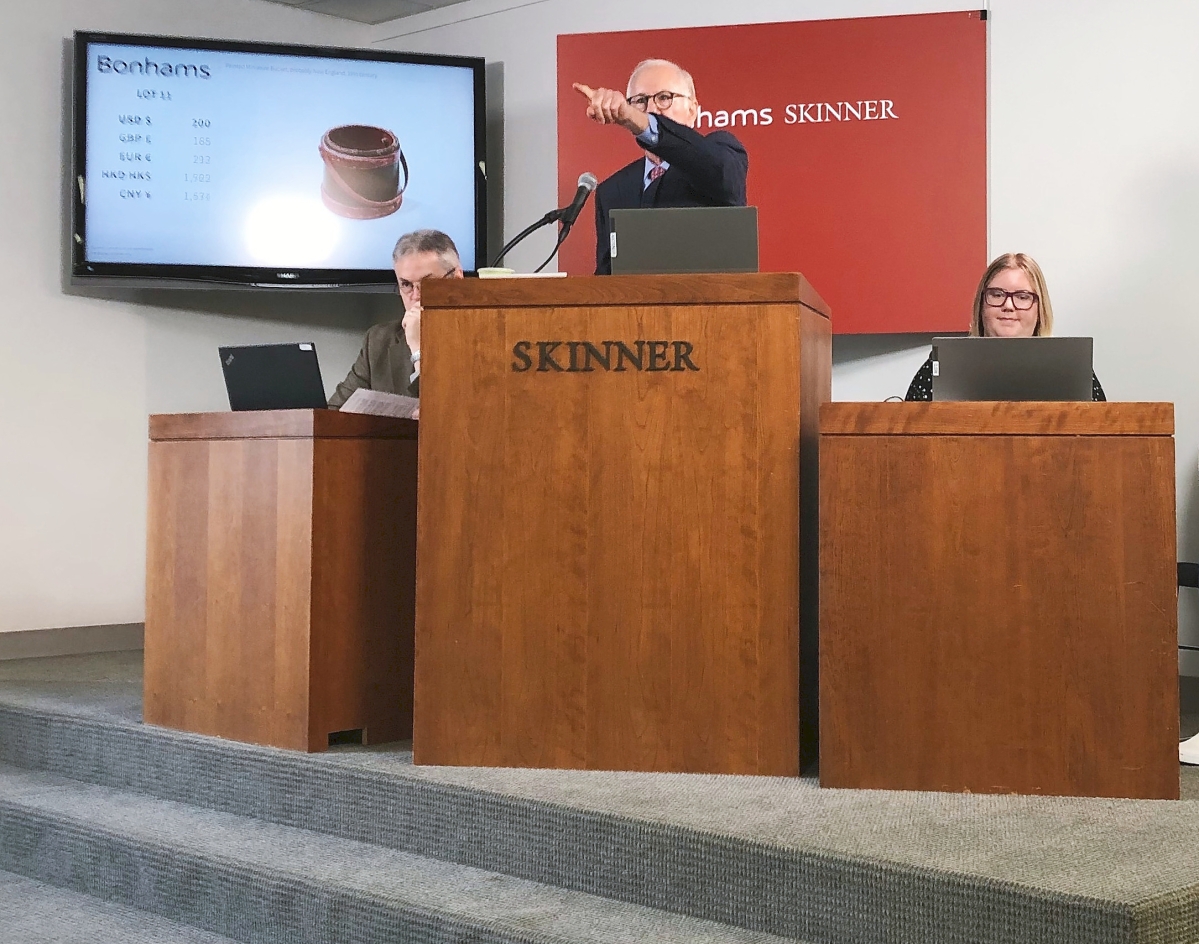
This was Steve Fletcher’s final appearance at the podium for an Americana sale. He’s stepping back from day-to-day operations of the Americana department, which he’s headed for decades.
Review & Onsite Photos by Rick Russack
MARLBOROUGH, MASS. – The successful November Americana sales at Bonhams Skinner mark the end of an era as Karen Keane and Steve Fletcher will soon be stepping back from their decades-long day-to-day management roles. Both are remaining with the company and both will have more time to focus on outreach to new and existing clients. The firm’s live sale on November 18 saw an Andrew Clemens sand bottle bring $277,575, a suite of Chinese export paintings earn $189,375 and a horse-and-hoop weathervane sell for $20,400. The “Autumn Palette” live sale of 173 lots totaled $801,000 and marked the last time Fletcher took the podium for an Americana sale. A 345-lot online sale, ending November 21, realized $223,000 and brought the total to $1,024,000.
Two collections assembled over decades by dedicated collectors comprised most of the live sale. There were more than 90 lots of painted furniture, boxes and woodenware from the collection of Maryellen and Brendan O’Toole and about a dozen weathervanes, mostly from the collection of Kimberly Wallin. As select as the offerings were from those collections, it was a sand bottle that led the day.
Sand bottles, the creations of Andrew Clemens, who was born in 1857 in Dubuque, Iowa, have been bringing strong prices at auction for the last few years and two were included in this sale. Finishing at $277,575 was a rare, inverted bottle with colorful text reading “Merry Christmas” on one side. The other side had a detailed head-on view of an approaching ship under full sail and flying the American flag. Additional decoration included bellflowers, elaborate foliage and geometric motifs. The bottle, at 9 inches tall, was larger than most of Clemens’ work. Inverted bottles, while not unknown, are not common. Clemens, deaf most of his life, died in 1894 at the age of 37, and was a prolific artist, selling most of his bottles in the $5 to $7 price range. He is believed to have created hundreds of sand bottles, with more than 100 recorded examples. The provenance of the bottle offered in the sale is well documented, having been created for Mary Walter as a gift for her son and daughter-in-law in 1887. The bottle is pictured in The Sand Art Bottles of Andrew Clemens, by Roy Sucholeiki. A second, smaller sand bottle, this one with a patriotic motif, brought $25,500.
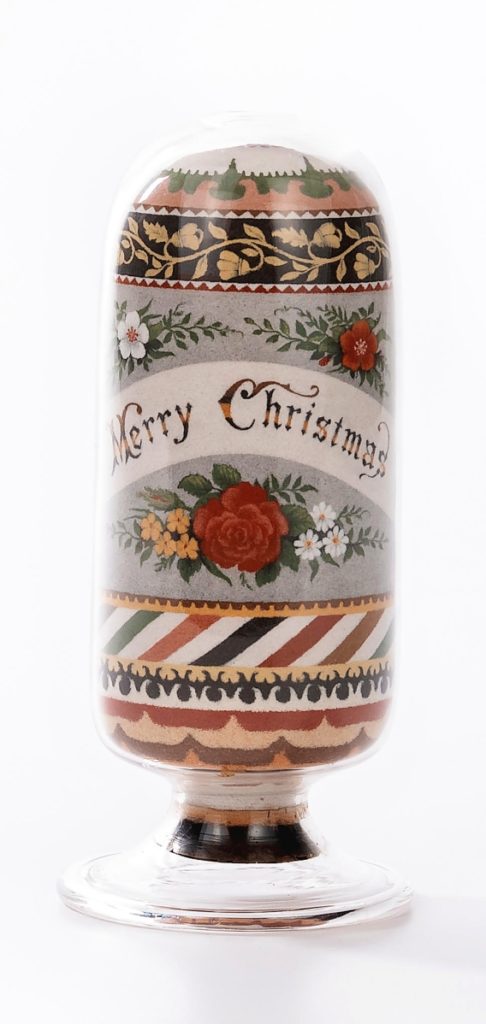
Finishing at $277,575 was this inverted sand bottle with text reading “Merry Christmas” on one side with a detailed head-on view of an approaching ship at full sail, flying the American flag, on the other side. It was the work of Andrew Clemens of Dubuque, Iowa, and was one of two of his sand bottles in the sale. It was the highest priced item in the sale.
As expected, a rare suite of four large Chinese export oil on canvas paintings earned the second highest price of the sales, finishing at $189,375. Attributed to Fatqua, circa 1815-25, the set, known as “The Four Seasons Suite,” depicts events from daily life in Imperial China. One is a scene of dragon boat races, another is a moonlight scene, and another is a winter scene. The online catalog has a detailed description of each. Carl Crossman’s book, The Decorative Arts of the China Trade, also discusses these paintings.
The live sale began with more than 90 lots of painted furniture, painted tin and accessories from the O’Toole collection. They were meticulous record keepers and many of the objects in their collection had the receipts from the dealers they bought from, often along with their own handwritten notes. The collectors were drawn to miniatures, evidenced by the many painted lots. The first lot got the sale off to a good start. A painted miniature bucket with cover and a swing handle, probably by Cotton Hersey, Hingham, Mass., circa 1850 sold for $6,120. The next dozen lots were also Hingham-type miniatures, with a firkin in old green earning $4,845. A circa 1840, painted dome top box with wrought iron hinges and latch sold for $3,188. It was decorated in red, black and yellow, with swags and feather and floral motifs. Another dome-top decorated box, with the name “H.L. Purdy” painted across the front, earned $829. When Steve Fletcher was asked which were his favorite items in the sale, one he selected was a miniature grain-painted stepback cupboard. It was decorated to mimic the grain of chestnut wood. It had been purchased at the New Hampshire Antiques Dealers show in 1998, Groton, Mass., from dealer Pam Boynton. A note written by Maryellen O’Toole was indicative of the O’Toole’s record keeping and their humor. Fletcher pulled out the handwritten note which said, “Brendan says, (to Pam) ‘Where’d you get that?’ Pam says, ‘From under my bed. Some old carpenter in Groton made it.’…Pam always said she had the best stuff under the bed.” The cupboard sold for $638.
The painted tin selection was also led by a miniature, in this case a 4½-inch bright red tray, decorated with colorful floral designs. It earned $2,040.
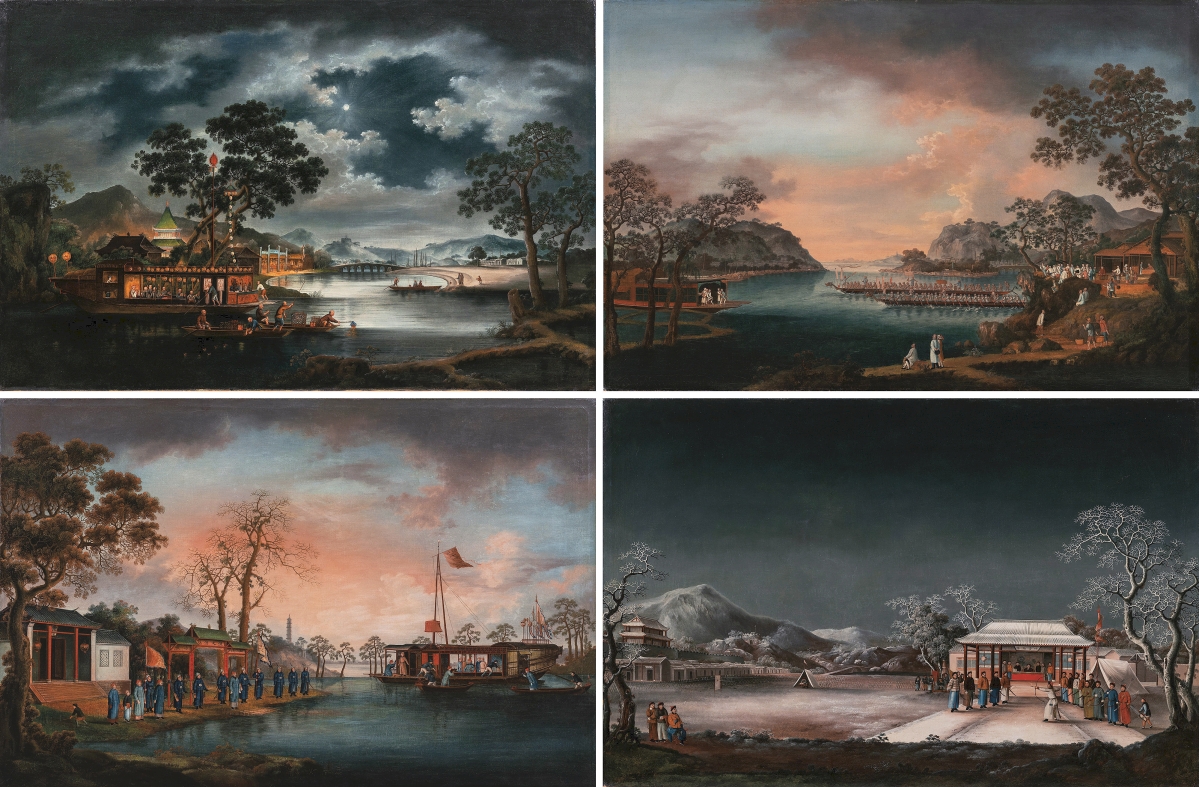
One of the two top lots in the sale, this suite of four large Chinese export paintings known as “The Four Seasons Suite,” realized $189,375. They were attributed to Fatqua and depicted daily life in Imperial China. Unsigned and unframed, each was 38½ inches wide. One was a night scene, another a winter scene.
It’s not surprising that collectors like the O’Tooles, drawn to paint decoration, would be interested in the work of the artist, Rufus Porter. They had a pair of watercolor portraits attributed to Porter, which sold for $4,080. The circa 1820 husband and wife were in profile, facing each other. The paintings were on cut paper, mounted on twill fabric and framed together. A single profile portrait of a young woman, attributed to Porter as well, sold for $1,530. They also had a rare copy of one of Porter’s instructional books, A Select Collection of Valuable and Curious Arts, and Interesting Experiments, Which Are Well Explained, And Warranted Genuine, and May Be Performed Easily, Safely, and at Little Expense. It was published in 1820 and is often referred to simply as “Curious Arts.” It realized $1,148. While Porter is well-known for his murals decorating rooms in New England, and his watercolor portraits, he had many other accomplishments to his credit, including inventing a steam-powered flying machine. His other inventions included the revolving rifle, the rights to which he sold to Samuel Colt for $100. Porter’s portraits were created using a camera obscura he built that allowed him to complete them in about 15 minutes; he charged 20 cents apiece for them. He was also the founder of Scientific American magazine; in print since 1845, it is one of the oldest continuously published magazines in the United States.
Weathervanes included several examples from the O’Toole and Wallin collections. The top price was earned by a 30-inch copper and zinc “Horse and Hoop” example, attributed to A.L. Jewell & Co, which brought $20,400. A 28-inch molded copper and zinc merino sheep, with applied copper ears and attributed to A.J. Harris & Co., earned $17,850, the same price as a 36-inch gilt, molded copper setter, known as “Ranger,” probably from a mold carved by Henry Leach. It was an eye-catching example with serrated edges, and an extended tail. A 33-inch copper “Trumpeting Cherub” weathervane, attributed to L.W. Cushing and Sons, Waltham, Mass., circa 1833, realized $14,025.
As mentioned, the online portion of the sale, grossed $223,000. A pair of mid-Eighteenth Century portraits of Mr and Mrs Andrew Sigourney, attributed to Joseph Badger (1708-1765), easily topped that portion of the sale, bringing $12,113. A large collection of Liverpool transfer decorated jugs were included, as was a collection of burl objects. There were several lots of furniture included in this portion of the sale. A circa 1770 Connecticut River Valley carved cherry chest-on-chest earned $3,570. A circa 1820 Boston mahogany canterbury, or music rack, with one drawer played to $4,463. A pair of heart-and-crown banister-back side chairs, attributed to Andrew Durand, Milford, Conn., circa 1730-40, realized $4,463. There were numerous candlestands, chairs and cased pieces available.
All prices included buyer’s premium, as reported by the auction house. For additional information, 617-350-5400 or www.skinner.bonhams.com.

